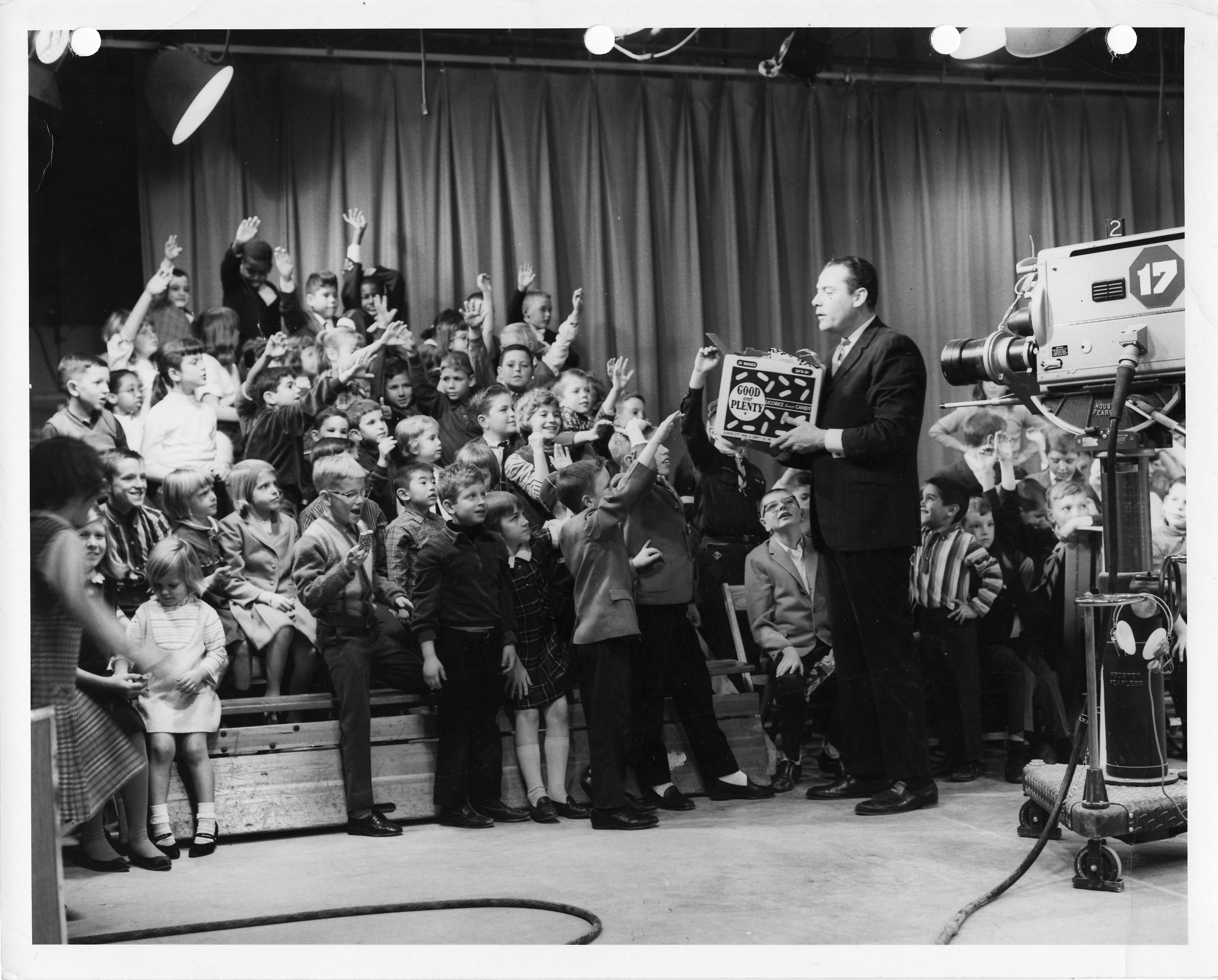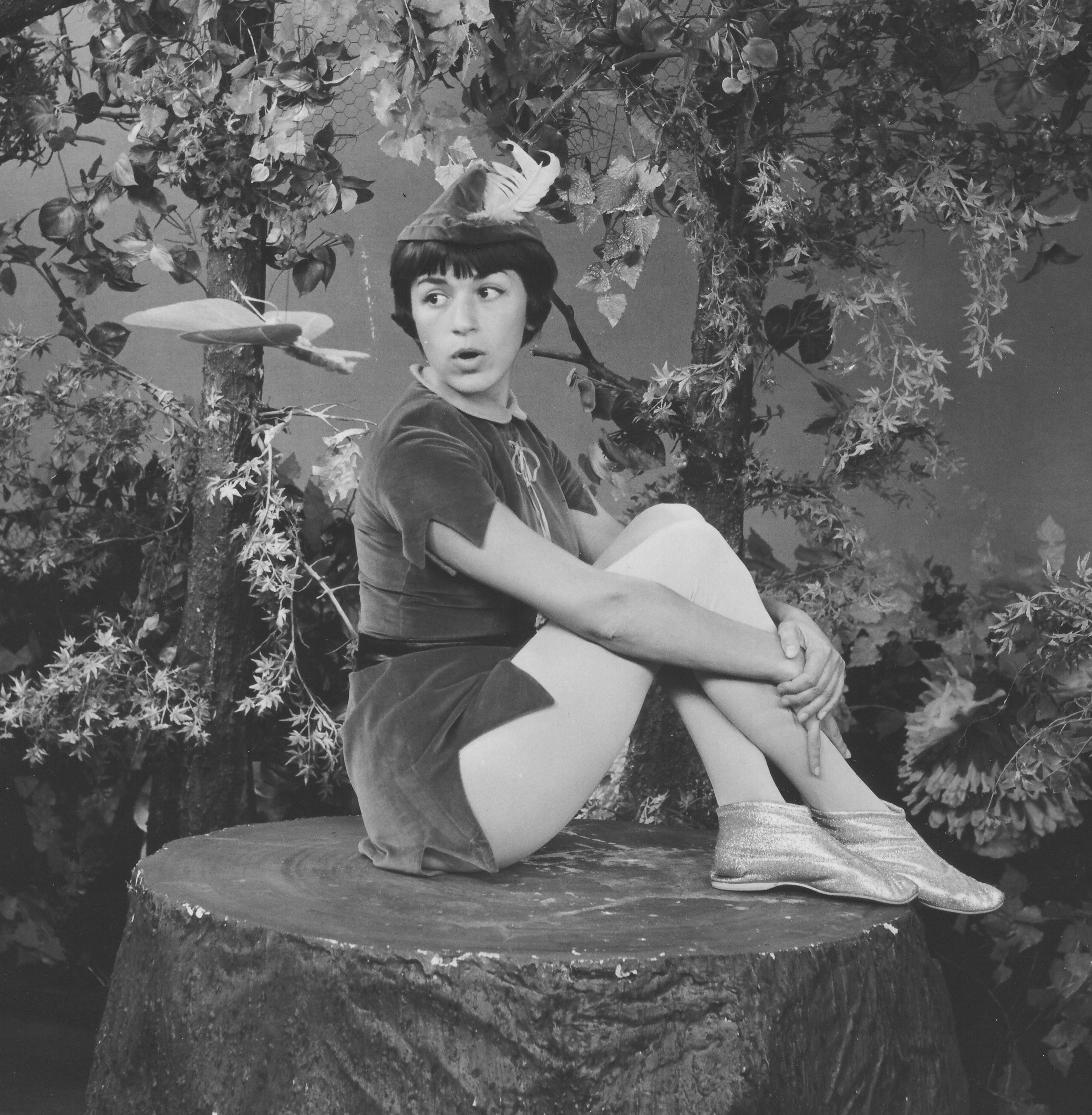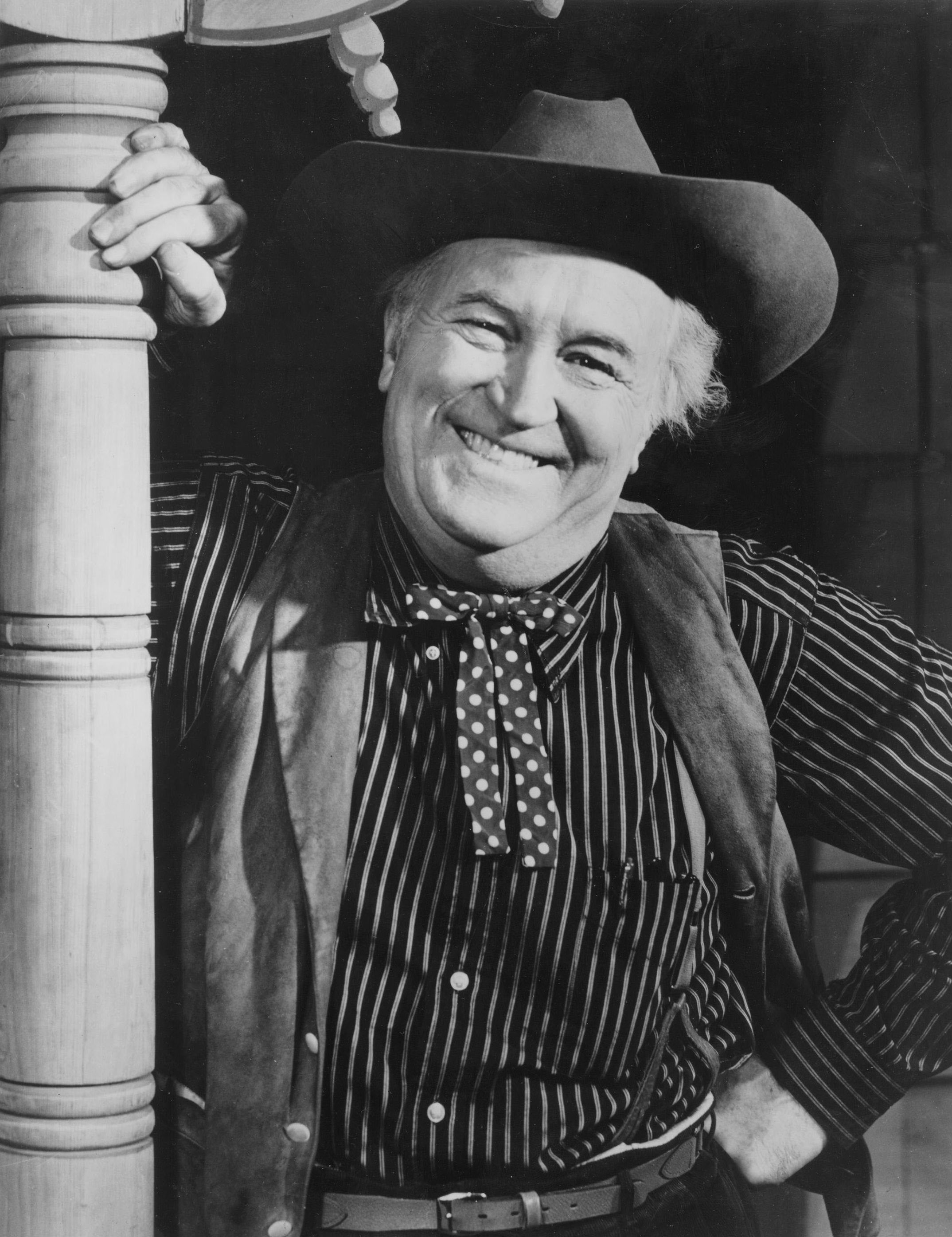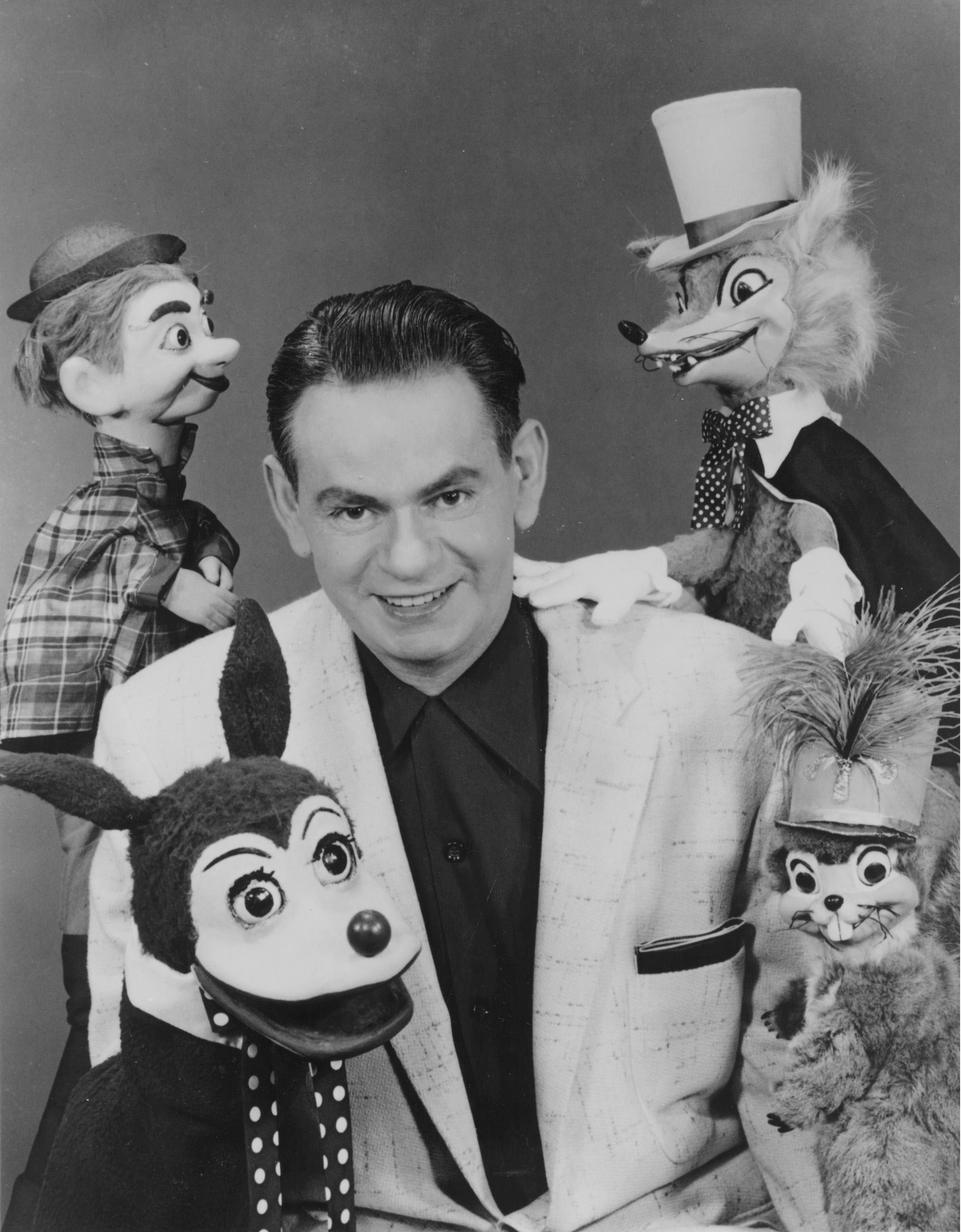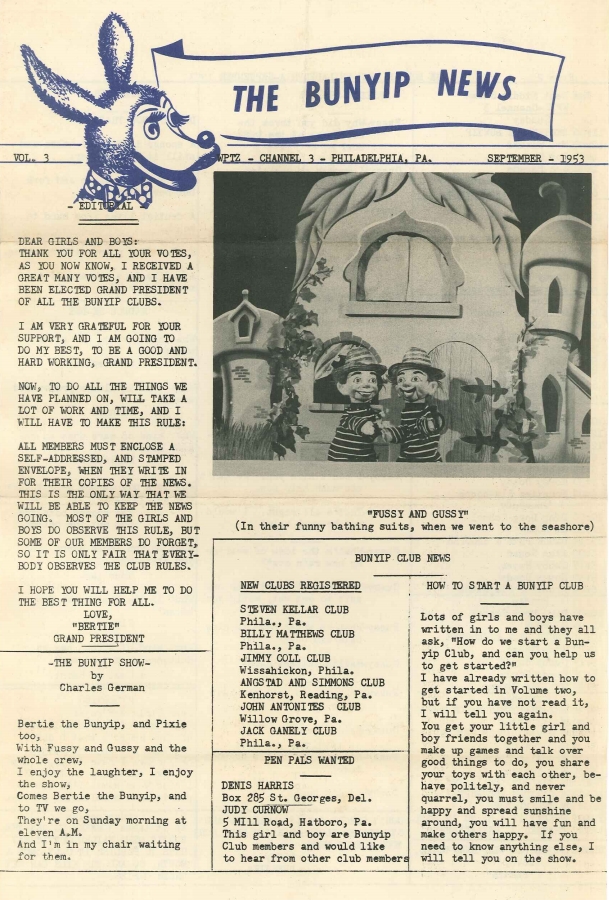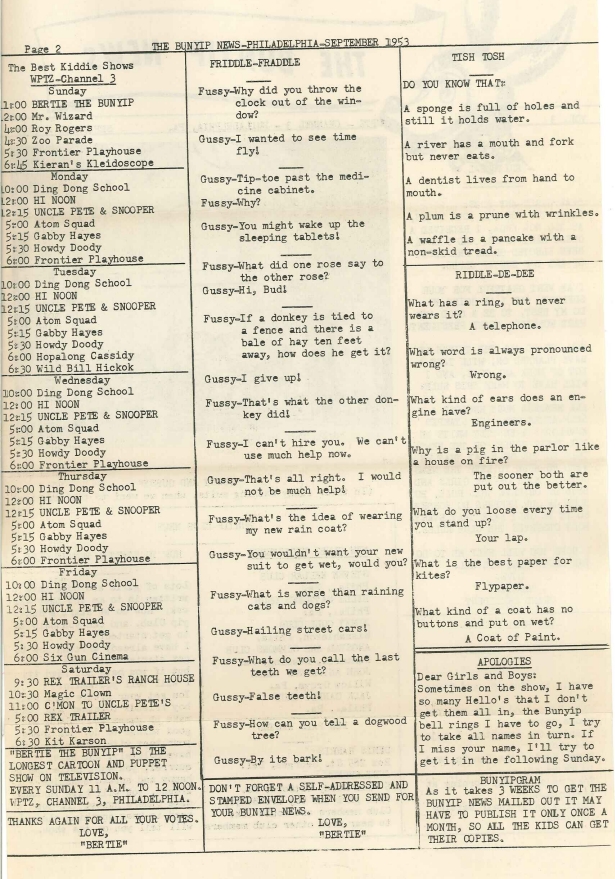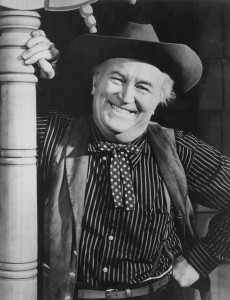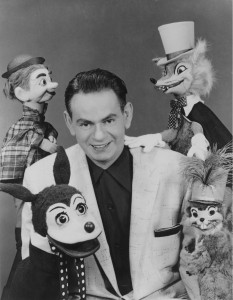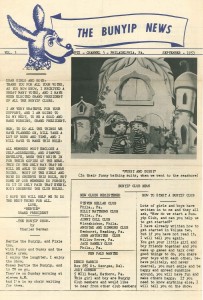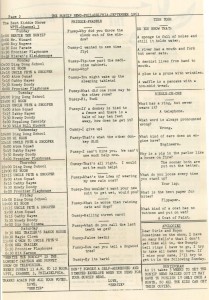Children’s Television
Essay
Local children’s programming in the Philadelphia area flourished during the “Golden Age of Television,” from the rise of commercial broadcasting after World War II to the early 1970s. During its heyday the hosted children’s show was a mainstay of locally produced programming. In the Philadelphia area, original children’s shows were produced by the three local broadcast affiliates – WPZT (later KYW), Channel 3 (NBC, later CBS), WFIL (later WPVI) Channel 6 (ABC), and WCAU Channel 10 (CBS, later NBC) – and reached viewers throughout Pennsylvania, southern New Jersey, Delaware, and even northern Maryland. The Philadelphia shows were not only financially successful, garnering large audience shares for their time slots and generating substantial advertising income for the stations, but were also critically well-received by reviewers, children, and parents.
When commercial television began, national networks typically did not begin their weekday broadcasts until after seven o’clock at night. Local stations had to fill the rest of the air time during each weekday. Children’s shows became a popular choice for economic reasons. The local children’s programs kept their production costs very low: the sets were minimal; there were no writers (most shows were ad-libbed); and the star (the host) performed live.
From Radio to TV
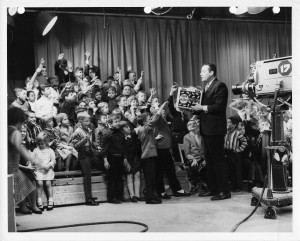
Most of the shows followed the same formula. The role of host was similar to the role of a disc jockey on the radio. Indeed, several of the popular children’s show hosts in the Philadelphia area were originally radio personalities. The host introduced cartoons or film shorts (such as Popeye, Little Rascals, and The Three Stooges), which program directors purchased in bundles from the controlling motion picture studios or from brokers such as King Features Syndicate. Hosts filled the time between the segments with singing, improvised “dialogue” with the child-viewer at home, and story-telling often accompanied with drawings by the host done in real time. The host also served as the spokesperson for the show’s sponsors. Inexpensive to produce and popular with the child-viewer, these shows became attractive vehicles for local businesses eager to tap into the new advertising medium of television.
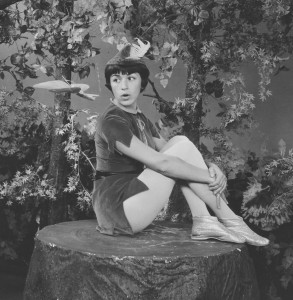
Hosts such as Sally Starr (Popeye Theater) and Bill “Wee Willie” Webber (Breakfast Time), whose personalities transcended the shows’ limited production values, attracted the children who tuned in daily. Many program directors felt that since there was so much time to fill, they could afford to give any reasonably good idea a chance. This atmosphere fostered creativity and encouraged experimentation. Children’s entertainers had the opportunity to land their own shows if they could craft a unique concept. In addition to Starr and Webber, some of the most popular hosts—based on both the longevity of the shows and market share of viewing audiences—were Jane Norman (Pixanne), Gene London, “Uncle” Pete Boyle, Traynor Ora Halftown (Chief Halftown), and W. Carter Merbreier (Captain Noah).
By the early 1970s, the heyday of children’s programming in Philadelphia had ended. New Federal Communications Commission (FCC) regulations prohibited the hosts from performing commercials for the sponsor’s products, thus making them less attractive to local businesses. The rise of educational programming, UHF stations, and the introduction of the Saturday-morning cartoon block resulted in increased competition for the locally produced shows on the network affiliates. Thus increased government scrutiny and regulation in conjunction with major industry changes reduced the financial viability of these shows and helped to bring about their demise in stations across the country.
Host Bill Webber
By decade’s end, most of the local hosted children’s shows were gone. Some hosts, like Bill Webber, made a successful transition to UHF. From the mid-1960s through to the end of the 1970s, Webber hosted cartoon shows for local stations Channel 17 (WPHL) and Channel 48 (WKBS). Captain Noah and His Magical Ark (which began in the late 1960s) sailed its final voyage in 1994. Chief Halftown’s weekend show continued on the air until 1999, although the format had changed from a cartoon show to a children’s talent showcase.
Even though the hosts of the shows were no longer on television they continued to personal appearances and draw crowds of former child-viewer fans at local parades and amusement parks throughout the area. Bill Webber, Ora Halftown, and “Uncle” Pete Boyle are now deceased. Many of the remaining hosts have reinvented themselves and have had second careers. Jane Norman has had a highly successful career as an author and currently tours and records as an interpreter of the Great American Songbook and jazz standards. Sally Starr was a radio show host (WVLT Vineland, N.J.) until her retirement in 2011. Gene London became a historian and curator of movie costumes. His collection has been featured in museums nationally and internationally. Although now retired, W. Carter Merbreier continues to write for children and is active in professional organizations such as the Broadcast Pioneers. (The set of Captain Noah is on permanent display at the Please Touch Museum in Philadelphia.)
Though their reign over the “Golden Age of Television” was brief, children’s television show hosts in the Delaware Valley left an indelible mark on the children of the era who were comforted by the hosts’ warmth and charm. Television stations produced inexpensive yet high-quality programming, and Baby Boomer children in the Philadelphia region reaped the benefits.
Vibiana Bowman Cvetkovic is a reference librarian at the Paul Robeson Library of Rutgers – The State University of New Jersey. Brandi Scardilli graduated from Rutgers University–Camden with an M.A. in history. (Author information current at time of publication.)
Copyright 2012, Rutgers University
